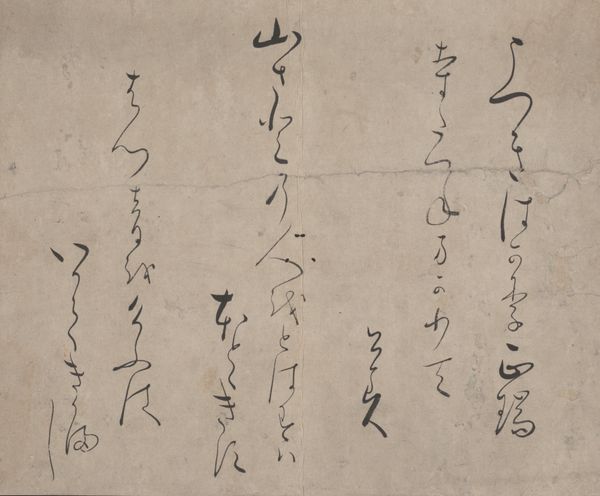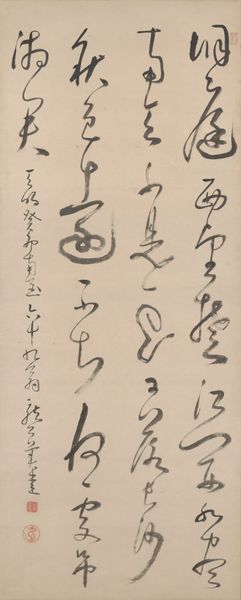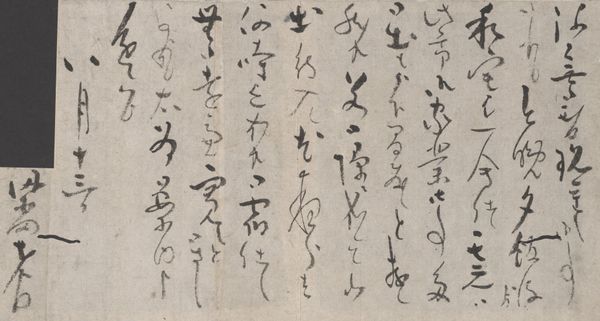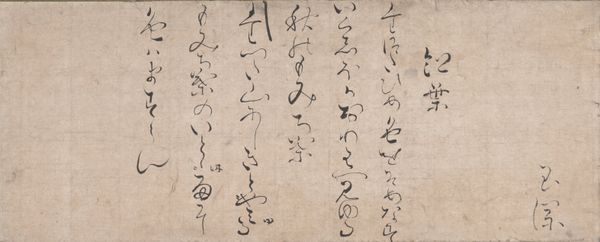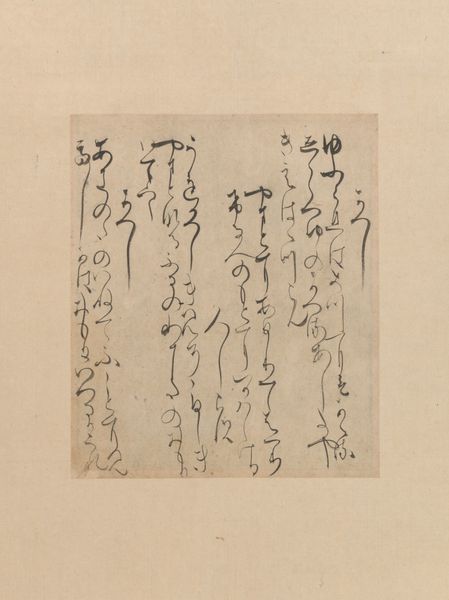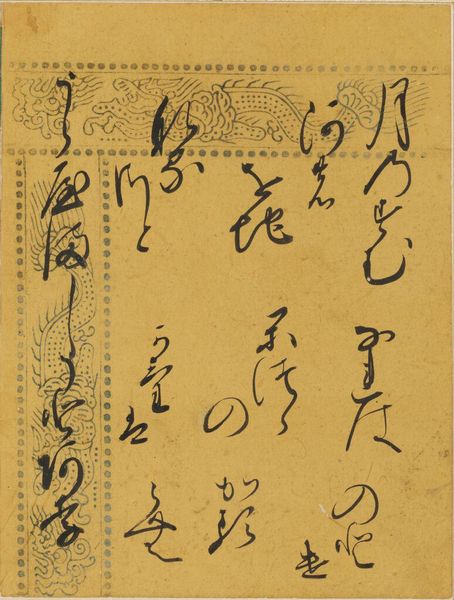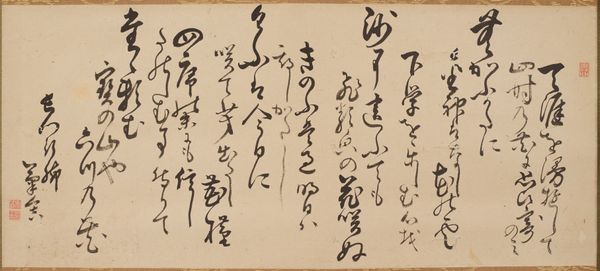
Letter of congratulations late 16th - early 17th century
0:00
0:00
paper, ink-on-paper, ink
#
asian-art
#
japan
#
paper
#
ink-on-paper
#
ink
#
line
#
calligraphy
Dimensions: 6 11/16 × 25 3/4 in. (16.99 × 65.41 cm) (image)
Copyright: Public Domain
Curator: Here we have "Letter of Congratulations," a work of calligraphy created between the late 16th and early 17th century by Konoe Nobutada. It’s ink on paper. Editor: The flow of characters seems very dynamic; it almost feels like the characters are dancing across the paper. Curator: Nobutada, a figure of immense cultural influence in Japan, demonstrates mastery over the materials here. Look at how the ink bleeds into the paper in places, how the density of the characters clusters and then thins out to nothing. He understood the craft of paper-making, how ink interacts with different weights and textures of paper, doesn't he? Editor: Indeed. And consider that this "letter of congratulations" wasn’t simply about conveying a personal sentiment. Such gestures reinforced hierarchical relationships and solidified political alliances. Nobutada was an important court figure. So this finely wrought piece isn't just art—it’s a performative act of power. Curator: It speaks to a culture where the tools themselves – the brush, the ink, the quality of the paper - carried tremendous significance, right? It’s a testament to the artisanal nature of aristocratic life, where calligraphy was not merely writing but a practiced, refined skill. Editor: Absolutely, and the fact that the artist was of noble origin is important. How often throughout history have opportunities for art been decided along lines of gender or social class? Whose labor do we value in our discussions of artistic creation? What traditions are deemed important by certain elites and how does that then affect other art movements? Curator: Looking closely at how each stroke is rendered makes you realize the hours, maybe years, of disciplined training required to achieve this level of control. I find it fascinating how traditional skills like calligraphy get tied to notions of gentility and cultivation. Editor: Exactly, this piece also brings into the conversation how even congratulatory correspondence becomes woven into webs of class, identity, and cultural expectation. There is almost nothing in the world innocent of power relationships. Curator: Examining “Letter of Congratulations,” it makes us aware of the intricate layers embedded within something that might at first appear decorative, or merely skilled craftsmanship. Editor: I think by thinking more inclusively about the context surrounding works like this one we stand to find new meanings within. Thanks for the conversation.
Comments
minneapolisinstituteofart almost 2 years ago
⋮
This congratulatory letter is written with characters strung together, addressed to an unknown friend of the high-ranking courtier and literati scholar Konoe Nobutada: “I have surely received your letter of the ninth: I congratulate you on being granted an increased stipend in Yoshu_ [Io, Ehime, Shikoku] from the Shogunate. Awaiting the time in the near future when you can come up to our province. I was much pleased to receive your good letter—congratulations, congratulations!”
Join the conversation
Join millions of artists and users on Artera today and experience the ultimate creative platform.

